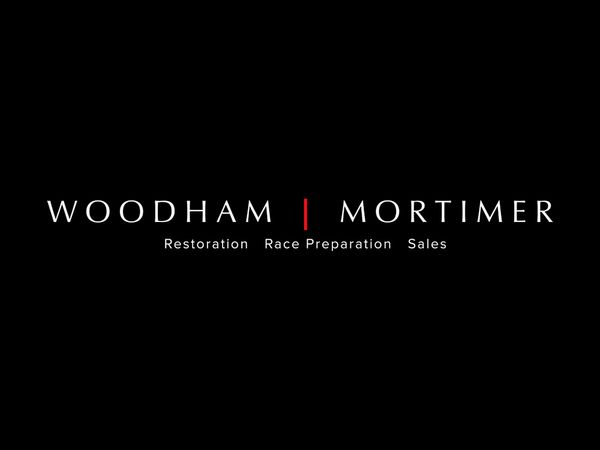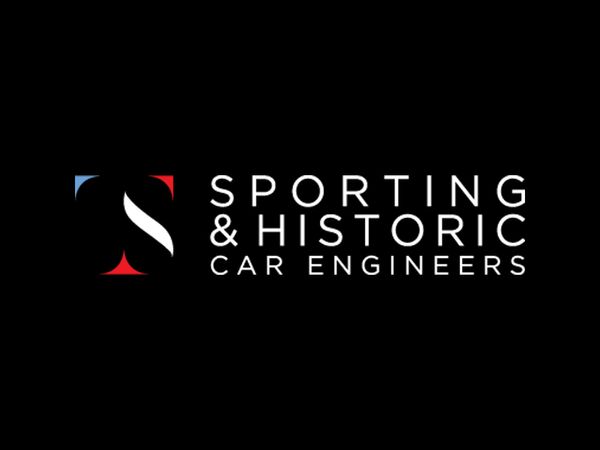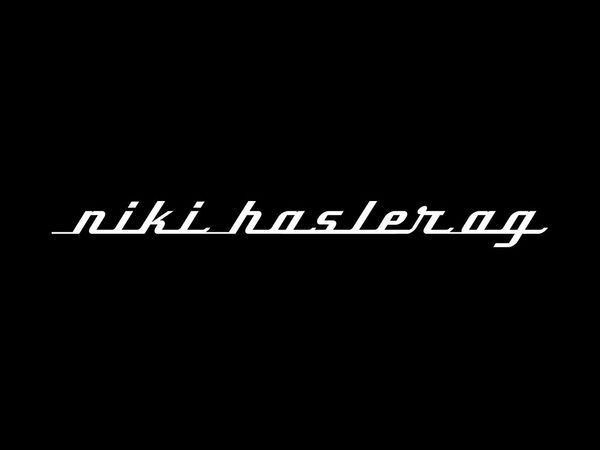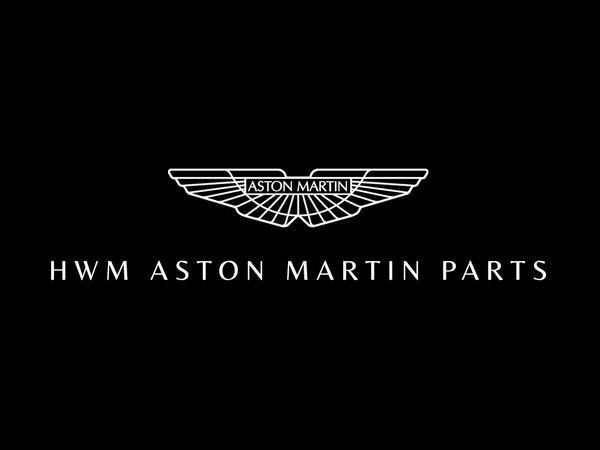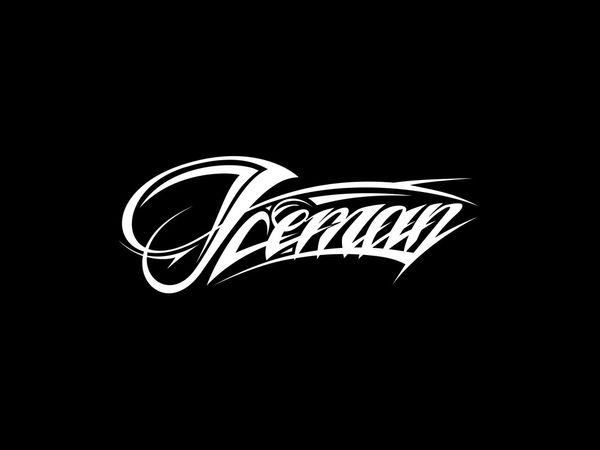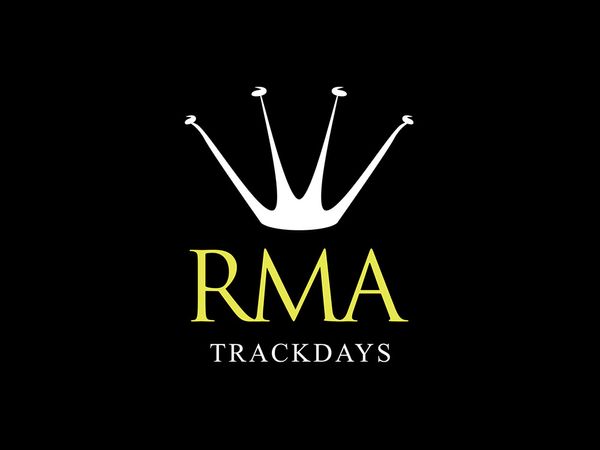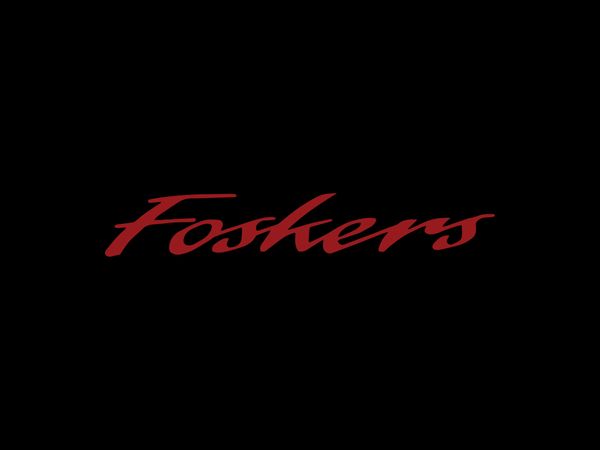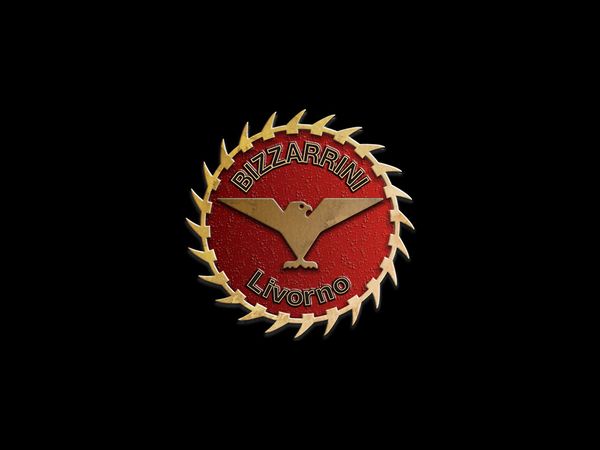1973 3-litre Martini Racing Works Team Porsche Carrera RSR 'R7' Endurance Racing Coupé: £3,750,000 - £5,750,000
Ex-works team, Ex-Herbert Müller/Gijs van Lennep 4th place at Le Mans, Ex-Peter Gregg/Hurley Haywood, Ex-Hector Rebaque
Chassis no. 9113 600686
Engine no. 6930047
• Uniquely original ex-works Martini Porsche RSR
• Uniquely verified by 1973 team chief Norbert Singer
• Uniquely confirmed identity by US Court
• Best-finish ever at Le Mans by a Porsche RSR
Embodies dozens of original Porsche works 'tweaks'
Here, for the first time, we proudly bring to the classic cars auction market one of the legendary 1970s period's most iconic closed-Coupé racing Porsches. This German silver-finished ex-works team car's triple-tone, blue-and-red banded, Martini Racing livery is one of the most attractive and significant of the great German marque's entire, scintillatingly successful, racing history.
What's more, this particular car - known within the factory team as 'R7' - was co-driven by works drivers Herbie Müller and Gijs van Lennep into a rousing fourth place finish overall in the 1973 Le Mans 24-Hour race, the most prestigious crown-jewel qualifying round of the FIA's endurance-racing World Championship of Makes. So why should that fourth place be so celebrated?
Because it was taken by this closed-cockpit production-derived Grand Touring car - although it was competing there in the more liberally-regulated Prototype racing category - and 'yet R7' here was headed home only by three pure-bred racing open-cockpit sports-prototype 'rocket ships', each one a 3-litre 12-cylinder-engined works team entry. They came from Matra-Simca (who took first and third places) and (in second position) Ferrari, no less.
Judge a competition car by the company it once kept, and 'R7' indeed scores stupendously high here - having shared track space with the Matra-Simca MS670Bs of Henri Pescarolo/Gérard Larrousse, of the two Jean Pierres - Jabouille and Jaussaud - and the factory Ferrari 312PB of Arturo Merzario/Carlos Pace... So here indeed is a works RSR of unique importance.
Following its success at Le Mans, 'R7' was then entrusted by Martini Racing to the junior pairing of young Austrian Helmut Koinigg/Manfred Schurti for the next World Championship round, the Osterreichring 1,000 Kilometres race, in which they finished ninth, one place behind Müller/van Lennep in the sister car that day, 'R6'.
Only one more World Championship round remained on the 1973 sporting calendar, the Watkins Glen 6-Hours in up-state New York. In preparation for it 'R7' was supplied by Porsche to the leading American marque exponents, Brumos Racing. They ran the car there in their own livery of overall white with broad red-and-blue centreline stripes. The distinctive 'ruff' type 'Mary Stuart' tail treatment used on this particular car at both Le Mans and the Osterreichring was replaced by a long-tail/narrower wing treatment, and the car was co-driven by the experienced (and earlier in the year the Daytona 24-Hour race-winning duo) Peter Gregg and Hurley Haywood.
They first competed - on July 21, 1973 - in the 6-Hour race in which this historic Porsche finished seventh overall. Then next day Peter Gregg drove the car solo in the accompanying Watkins Glen CanAm Championship round, finishing ninth there, amongst the unlimited-capacity 'anything goes' Group 7 sports-racing cars.
It appears that part of Porsche's agreement to supply 'R7' to Brumos was for them subsequently to find a private buyer for it, and they succeeded - the car then passing to Hector Rebaque Sr in Mexico for his aspiring racing driver son, also named Hector. The car would be entered under the Rebaque Rojas team title.
They then campaigned 'R7', essentially in its Watkins Glen 'long-tailed' configuration, repainted in white, red and yellow 'Viceroy' cigarette-brand/Cafe Mexicana coffee livery before Hector Jr aspired to Formula 1 with ex-works Lotus 78 and 79 Grand Prix cars, followed by his own Rebaque-Cosworth HR100 venture late in 1979. Mr Rebaque was then engaged by Bernie Ecclestone's Formula 1 Brabham factory team for 1980-81 before moving to American CART Indycar racing. His considerable driving prowess was demonstrated by winning at Road America in his first CART season - displaying the skills he had previously honed in nothing less than 'R7', now offered here.
This ex-works Porsche RSR's 1974 season had also seen it entered by the Rebaques in its second consecutive Le Mans 24-Hour race, running there in Viceroy colours co-driven by young Hector with Guillermo Rojas and Fred van Beuren Jr as his team mates. Suffering this time from ignition problems, the car failed to finish.
In Rebaque's hands 'R7' featured most prominently in home Mexican events - as one of no fewer than five RSRs which the Rebaques owned in all (of the 55 built) - before its story became distorted by a long-time commonly-held belief - within some Porsche circles - that it had been damaged beyond economic repair in an incident which involved it having fallen from the Rebaques' trailer in an accident on the public road.
In later years the story developed to suggest that after that incident the car had been dismantled as a source of spare parts. Some of what were alleged to be those parts found their way via one Diego Febles to an American Porsche enthusiast who built up an approximate look-alike 'R7' finished in 1974-style Viceroy livery, and making claim to the identity of the original Le Mans fourth-place Martini car.
In fact the apparent disappearance of the real 'R7' - now offered right here - had come about because it had been discreetly exported from Mexico - we believe as early as 1977 and in complete assembled form after having been only lightly damaged by falling from its trailer.
It had passed to a very private, security-minded Italian collector named Massimo Balliva. This historic ex-works/Martini Racing Porsche Carrera RSR then remained within his care for over thirty years, effectively hidden away, almost entirely out of sight of the international Porsche fraternity, and out of mind...
In 2009, prominent Porsche specialist Yvan Mahé of Equipe Europe was then running a rather similar RSR at an historic race meeting at the Monza Autodrome, outside Milan, Italy. During that meeting he was approached by a gentleman who expressed great interest in his car, later mentioning that he had an apparent sister RSR "back home". They talked about their shared interest and some time later - apparently unheralded - an open truck delivered the genuine and effectively long-lost 'R7', now offered here, to Mr Mahé's workshop in Paris, France, for some remedial work to be undertaken.
In fact the car was returned cosmetically to more or less its 1973 Le Mans form by French specialist Raymond Touroul, restoring it to its distinctive so-called 'Mary Tudor' rear wing/aerodynamic spoiler form, and renewing its original-style Martini Racing livery.
Subsequently another well-known Porsche-world figure found a purchaser for the car - the current vendor - in the USA. With the re-emergence there of this perfectly genuine ex-Martini Racing/Brumos/Rebaque/Balliva 'R7' - the owner of the supposedly reconstructed 'parts-based'' vehicle then initiated litigation to bolster his rival claim to this car's historic identity. This litigation was vigorously resisted, yet ground on for some seven years until May 23 this year when the case was ordered dismissed by a New York court, following a settlement. As part of that settlement the replica owner was permitted to keep his car but agreed to make no further claim to ownership of 'R7' - while continuing to represent his vehicle as "...a reconstruction of the long tail RSR, currently presented in Viceroy livery raced by the Rebaque Rojas team..." - only.
As part of the background to this litigation - to establish authenticity, as far back as April, 2016, 'R7' as offered here had been transported to Porsche Classic in Germany where it was inspected by the manufacturer's veteran senior engineer and former works team manager, Norbert Singer.
He had supervised construction and preparation of the factory's Martini Racing RSRs in 1973, so was uniquely placed to comment on the cars' originality. After a full day of careful examination, covering every part of this car, Mr Singer positively identified it as RSR 911 '360 0686' (aka 'R7') and provided a formal statement to that effect, comprehensively confirming this body shell's historic identity.
Mr Singer recalled: "When we were building the 911 prototype race cars...there were certain reinforcements which we had to add to certain components of the regular production Porsche 911 to enable them to withstand the extra stress of racing...in particular, the cross tube and the cross-member (ahead) of the engine. From my original inspection of those reinforcements, I am confident they are the original reinforcements from 1973. I noted that the welding...appeared not be done with the precision which one would typically see in a production Porsche 911. This is consistent with my recollection of the time pressure we were under to convert regular 911s into the R-series racing prototypes. Because of these time pressures, we had to quickly add the extra reinforcement to the cross tube and the cross member in the engine compartment...so we...did the welding ourselves rather than bringing in specialized welders...as was typically done with production cars. This poorly done (but effective) welding (is) present...around the cross tube and the cross member in the engine compartment. In my opinion, it is highly unlikely that this fact would be known except to those of us who were involved in the development of the Porsche RSR series...".
He identified not just one but numerous detail features demonstrating the amazing hand-built care and forethought which Porsche built into each of its team cars to maximise their competitiveness on track.
Each tiny, detail feature surviving today exemplifies Porsche's sheer contemporary investment in manpower, manufacturing commitment and money, to produce a specialised, lightweight, pure competition version of their revered Typ 911 Coupé production car design.
As background, in the early 1970s, a new European Grand Touring Championship was giving the competition 911s a fresh lease of life. Race grids were almost completely filled by this model. By the Autumn of 1972, Porsche launched its new 911 'Carrera' with engine capacity raised from 2.4 to 2.7-litres, and a batch of 500 lightweight-bodied 911s was built to achieve governing-body sporting acceptance (homologation) for it. Three variants were offered – the RS (RennSport), RST (touring) and the ultimate racing RSR of which 'R7' here is one of only four such Martini Racing works team cars - from the eight built - known to have survived.
Evidently when Porsche first considered what became their 911 RSR model in preparation for the 1972-73 racing seasons it was believed that model homologation could be achieved by manufacturing only 25 special lightweight-bodied 911 Coupés. However, the FIA governing body then decreed that the minimum acceptable batch size to achieve the lowest possible model weight would be 500 units. The German company's decision to blast ahead without prior dealer commitment to buy such cars bears testimony to their racing bloodline. And overall some 1,580 units would be produced with 0.88mm thick body skins instead of the accepted standard 1mm, saving some 9Kg, 19.8lbs, in bare body shell terms. Further weight was saved by the RSR's unique use of 3mm thick Belgian-made Glavabel glass in its windows. In engine terms, 1973 was the last year of the naturally-aspirated pre-turbocharged 911 RSR series.
Today, 'R7' is considered to be the best-preserved of that rarefied group of only eight works cars built - of which two were written-off in period, and only four then surviving extensive subsequent modification - and now resplendent in its classical Martini Racing livery.
Production Porsche RS cars originally featured two separate batteries mounted individually well forward in the nose. Subsequently, to achieve a subtle change in weight distribution while also providing better protection from crash damage, a single bigger battery was mounted further back, set into the forward trunk floor in what became known as 'The Smuggler's Box'. The works RSRs' rear crossmember was double-skinned, then welded to the rear engine-bay firewall. On its right-hand side, two small brackets were added to carry the oil catch tank.
RSRs also featured a floor-mounted recess for double hydraulic-brake system master cylinders allowing front to rear brake-bias adjustment. The shell's centre tunnel was reinforced, while in the forward end of each rear-wheel arch, welded-on torsion tube reinforcement plates are visible. The rear seat-bucket panel was welded to the cross-member skin.
Under the right-side rear wheel arch the inner body skin was ball-peen hammered to accept recessed oil pipes, providing space to clear wider rear wheels and tyres. Another distinctive feature of 'R7' is the hammered relief in the right-rear seat bowl to facilitate faster changing of the starter motor, should that prove necessary. Like all long-time works racing teams, Porsche's painstaking car preparation reflected years of often painfully hard-won experience... For the connoisseur, it is surviving fine details such as this which make 'R7' such a valuable - and unique - surviving document today...
Where customer Porsche RSR rear spring plates featured rubber bushes, the Martini Racing works cars had them replaced by needle-roller bearings. The front wheel-bearing axles were moved further up the damper bodies to lower ride height without affecting wheel travel, and wider-rim centre-lock wheels instead of bolt-on type would also be adopted.
During the celebrated 'Unsafe at Any Speed' Ralph Nader excitement of 1967, Porsche had altered the weight distribution of its contemporary production 911 Coupés by adding cast iron or lead within the front bumper. As 'the Nader case' rattled on into 1969, Porsche lengthened their 911s' wheelbase by 2 1/4-inches, reducing the rear end overhang. In a test at the Ricard-Castellet circuit in France, driver/engineers complained of bad handling in long high-speed corners. A geometric 'stiction' point was identified within the rear suspension which was corrected by adding a 2 1/4-inch extension bracket to the torsion tube to fit short-wheelbase trailing arms in an LWB 911 body shell. This facilitated fitting short trailing arms. The modification was made to some production cars for homologation purposes but was apparently unique to works RSRs. Of course it is one of the myriad confirmatory characteristics of 'R7' today.
The car also features a factory anti-roll bar mount modification, highlighted by Norbert Singer. It has ventilated Porsche 917-type competition brakes - has an alloy front cross-member versus production steel - adjustable front and rear anti-roll bars - and the bigger RSR oil radiator. These works cars were copper piped for their chosen onboard extinguisher system, while the roll-over cage is founded in unique works-specification forgings.
For the Le Mans 24-Hour race a pits-recognition identification light was mounted behind the top-right corner of the windscreen glass, so the bodywork has no patched hole where that light might have been, which is a confirmatory feature of many other 24-Hour and 12-Hour race veterans. But instead 'R7' does bear the distinctive drilling in its right-side A-pillar through which the power lead for that ID lamp was run - a feature evidenced by contemporary photography at the Sarthe circuit. Also there, as preserved again upon 'R7' today, this works car ran with the contemporary standard-setting Cibie Iode headlamps disguised within a production Porsche-contract Bosch fitting! Hella lenses were used. In addition the Le Mans RSR used Citroen Pallas lights mounted within three holes in its nose panel, then changed to a single later. Also for Le Mans a potential fitting for a left-hand fuel filler was provided although none. None of the works cars finally had a wing filler. The distinctive feature was that the hole in the inner wing through which the fuel filler neck would have passed was blanked-off by a distinctive spot-welded plate. This was NOT peculiar to Le Mans cars.
This in no way detracts from the almost unprecedented originality of 'R7's load-bearing bodyshell itself. The driver's footrest or 'dead pedal' is welded into place in these RSR works cars. The shell carries a standard chassis data plate at the front lip within the nose, but its individual chassis number is then stamped into the forward floor panel of the front trunk area. This stamping is entirely distinctive and it has been forensically proven to be completely cleanly struck and original. The large and complex pressed panel carrying it attaches via more than 320 spot welds, rendering falsification practically impossible without leaving evidence of panel and/or weld disturbance. The original body plate in 'R7's left-side door jamb reads '908-7-2' which was the initial white paint formula for RS and RSR cars.
While production RS engines had magnesium crankcases, in ADAC Championship racing the latest 3.0-litre BMW CSLs were initially beating them - so Porsche redesigned their engine crankcases to enable a capacity stretch nearer to a full 3-litres. Silumin alloy was then used, heavier but stronger than magnesium, to accommodate the extra loads generated within the enlarged and more powerful engine.
Initially 'R7' and its works-entered sisters had been intended by Porsche to compete as GT category contenders. However, after having done so in the early-season Vallelunga 6-Hours, finishing 1-2 in that class, at the early-season Monza race in Italy, Martini Racing team manager Singer was confronted by an Italian private RSR owner whose engine had failed in practice. He had spotted several 'cheats' on the works cars that the customer versions did not feature, and helpfully drew the stewards' attention to them... The scrutineers' suggested solution was simply to re-classify the works cars from the GT to the Prototype class. To pay the revised entry fee then required, Singer apparently had to have a whip-round amongst his mechanics to raise sufficient cash!
Upon his return to the factory back home he was convinced he was going to be fired. Called in to boss Dr Helmut Bott's office, Singer tensed as the senior man reached down to a desk drawer and produced some paperwork.
Singer was convinced this meant imminent dismissal, only for Bott to brandish numerous letters of complaint from customers who had purchased RSRs that they had been racing against the factory in that GT class. Instead of firing Norbert Singer, Dr Bott actually exclaimed "Wunderbar! Now we race as prototypes". The problem had been solved. Singer survived. Thereafter the works RSRs competed in the Prototype class, distinctively running wide-rim centre-lock wheels (amongst other modifications) in contrast to the homologated GT category five-stud bolt-on type.
One of the most novel giveaways to 'R7's originality is preserved within the car's right-rear cabin area. The RSRs initially had a chronometric rev counter with additional 'tell-tale' needle - but Porsche's engineers got wise to drivers blowing engines and then manually re-setting the tell-tale before returning to the pits, swearing they hadn't over-revved prior to a failure.
Fascinatingly, there in the right-rear of its cabin, 'R7' features a tachometer-drive splitter mechanism. While the rev counter drive from the nose of the engine's right-hand inlet camshaft passed through the engine-bay firewall into this splitter, two drive cables then emerged from it, one powering the dash-mounted rev counter within the driver's eyeline (and reach), while the other drove a 'secret' second rev counter hidden behind the right-hand seat as a race engineer's double-check, beyond any interference from a belted-in driver...with something to hide... Later in the season a VDO centrifugal switch replaced the second rev counter, actuating a gear-shift light on the dashboard.
So - as demonstrated above - here is a Le Mans-starring, ex-works racing Porsche with distinctive European, American and Mexican racing pedigree, of now unchallenged definitive provenance, which preserves and presents so much evidence of its origins and past that they combine to provide a unique 'finger print'. It is the world's standard-setting ex-works Porsche RSR.
As Norbert Singer's inspection report summed up: "In conclusion, it remains my opinion that (this) is the authentic Porsche 'R7'. As I confirmed in my original report, the key elements of the car which are essential to the question of authenticity for a racing car of this type are originals."
The indelible evidence within the very fabric of this car today is readable to the most knowledgeable and discerning of racing Porsche connoisseurs, and accordingly we commend this simply remarkable survivor to the market. Here, purebred Porsche history – in that totally distinctive and illustrious Martini Racing livery - is now just a single, decisive, bid away.
Martini Racing
Of all motor sporting sponsorship liveries the dark blue/mid-blue/red striping of Martini Racing is one of the most distinctive, and most enduring. The Turin-based Italian vermouth distiller Martini & Rossi International first became closely linked as a motor sports sponsor with German entrant and racing driver Hans-Dieter Dechent. His family ran the largest Opel dealership in the Saarland region, based in Saarbrucken, and he had been competing since 1962, progressing by 1966 to a Porsche 906.
A friend of Dechent's, Paul Goppert, was head of marketing and public relations for Martini & Rossi's German subsidiary. In 1968 Dechent's Lufthansa team Porsche 907s also carried Martini stickers. In 1970 Martini Racing was launched officially, first fielding two Porsche 908/02 'Pflunder' sports-racing cars. The team was offered a special 917 Longtail Coupé to campaign at Le Mans, for which Porsche stylist Anatole Lapine created a swirlingly psychedelic 'hippie' livery. The car finished second. Martini's subsequent striped livery emerged in 1971 on the Porsche Salzburg team's 917s and 908/3s, featuring upon their Le Mans-winning car that year. Martini Porsches went on to win the great 24-Hour race twice more, 1976-77, plus many other world-class events.
Martini Racing also sponsored Formula 1 Tecno, Brabham and Lotus cars between 1972 and 1980, returned as a minor sponsor of Ferrari in 2006, and then as a title sponsor of the Formula 1 Williams team, 2014-18.
The brand's world-famous stripes also graced Porsche's World Rally Championship challenge in 1978, graced works Lancia sports and rally programmes from 1982-92 and have also featured in international touring car competition and even, most spectacularly, in offshore power boat racing.
But perhaps the most distinctive of all roofed-in Le Mans contenders to bear this illustrious Martini Racing livery has been the fourth-placed 'R7' from 1973 - as offered here.
80th Goodwood Members Meeting, April 15-16, 2023
Andy Prill on Driving 'R7'
I have been lucky and privileged to drive a lot of 1973 Porsche RSRs, so when I was invited to drive 'R7' on track at the 80th Goodwood Members Meeting I was excited, but not expecting the car to be much different to the other RSRs I have had the pleasure of experiencing. Not one of those other RSRs I have previously driven was unrestored and this, alone, made the car immediately feel different.
Once strapped in, and holding the steering wheel, you instantly sense the car's originality and are transported back in time. Then the magnitude of its individual history - which oozes from every pore of 'R7' - becomes apparent. All RSRs are precious but this one is simply a different level, making you as its driver very conscious of the importance of this car and the responsibility and trust bestowed upon you. Despite lacking preparation, and not having been on a race track since the 1970s, old tyres, brakes etc, while the car handles very well the engine is simply a sensation!
I have never experienced an RSR power unit so eager and willing to pull and this makes driving this car a different driving experience which quickly becomes addictive. Porsche's period claim of revving the RSR engines to 8,500rpm proves to be true and once this engine gets going the revs build so quickly you have to be very careful. Overall, you are left in no doubt about this car's performance and qualities, qualities that resulted in a GT that became one beating the best prototypes of the period. You are handling a Porsche driven by some of the best and It really is a simply amazing experience.
The sound of the engine on overrun into Woodcote corner and watching the reaction of the crowd that you could almost feel - that's a story in itself and it takes you right back to Le Mans 1973.......
Someone (I cannot remember who) once told me that to value a car like this you have to value the car, then separately value the history. I have a good idea of the value of a 1973 RSR but have no idea where to begin in respect to this car's history, a big part of which is due to it being the only structurally restored example of a 1973 works team Martini Porsche RSR.
Purple Paddle Lot: Please note there is restricted bidding on this lot which requires enhanced bid verification checks. Please contact us at bids@bonhams.com or call +44 20 7447 7447 as soon as possible if you are planning to bid on this lot to prevent any last-minute delays.
Click here to view the full lot list
GOODWOOD REVIVAL COLLECTORS' MOTOR CARS AND AUTOMOBILIA
9 September 2023, 13:30 BST
Chichester, Goodwood
Text & Image: Bonhams
